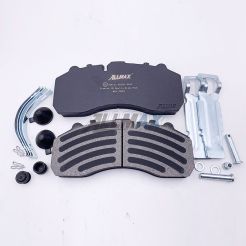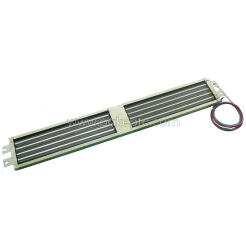KIA K5 15- Radiator
KIA K5 15- Radiator
Product Description
Product information
TS NO. :82138
MODELS: KIA K5 15-
CORE SIZE:625*466.5
OEM:25310-D4000
Raidiator Operation Principle: The car radiator dissipates excess heat generated by the engine into the air. It achieves this by circulating coolant (usually a mixture of water and coolant) through a network of small tubes inside the radiator, utilizing the convective effect of the air. As hot coolant flows through the radiator tubes, the air passes through the radiator core, carrying away heat from the coolant.
There is no fixed rule for when to replace a car radiator as it depends on various factors, including vehicle usage, driving conditions, maintenance practices, and radiator quality. Here are some common guidelines:
Maintenance Recommendations: It is generally recommended to inspect and maintain the radiator every two to five years or every 60,000 to 100,000 miles. This includes cleaning the radiator to remove any obstructions, checking for leaks, and ensuring the quality and level of coolant in the cooling system.
Radiator Condition: The condition of the KIA K5 15 radiator plays a significant role in determining when to replace it. If the radiator is leaking, severely clogged, damaged, or unable to effectively dissipate heat, replacement may be necessary. Additionally, if the radiator has undergone multiple repairs or has been in use for a long time, its performance may have degraded, making replacement appropriate.
Regular Inspection: Regularly inspecting the cooling system and radiator is important. If any issues are detected, such as leaks, corrosion, or damage, prompt repairs or replacement should be undertaken to avoid further damage and prevent serious problems like engine overheating.
The Passenger Vehicle Division has advanced production equipment and a strict product quality assurance system. It produces more than forty-two series of more than 8000 models of radiators for cars, mini vehicles, light vehicles and truck. A series of complete production process lines including parts cleaning,core assembly , core brazing, water chamber withholding product inspection,product packaging, ect.
The heat dissipation belt is made of a combined folded edge belt,whch improves the ability of the heat dissipation belt to resist lodging and ensures the stability of the crest distance. The crest distance is stable at 2.9-3.0, which is better than domestic counterparts and improve the heat dissipation efficiency of the product. The material is AA3003.
The division strictly follows the requirement of OEM standards to do a good job of product quality, and strictly controls each production process. After continuous developement, its design level, process level, product quality, business reputation and marketing service quality have been continously improved, and it has strong market competitiveness.
The production process of an automotive radiator typically includes the following main steps:
Design and planning: The manufacturer designs and plans the radiator based on the car model and specifications. This involves determining the radiator's size, materials, cooling efficiency, and other technical requirements.
Material preparation: Prior to production, the materials required for the radiator are prepared. These primarily include aluminum alloy or copper alloy sheets, plastic end tanks, pipes, and solder. These materials will be used to manufacture the core structure and cooling circuits of the radiator.
Core manufacturing: The radiator's core structure typically consists of a series of closely spaced parallel tubes and fins. Firstly, the manufacturer employs stamping techniques to shape and size the metal sheets accordingly. Then, these sheets are stacked together to form the parallel cooling tubes. Subsequently, the tubes and fins are fixed together using welding or aluminum brazing, creating a complete radiator core.
Assembly: Once the core and end tanks are manufactured, they are assembled together. This involves connecting the end tanks to the radiator core and securing them using welding, adhesives, or other connection techniques.
Testing and quality control: After assembly, the radiator undergoes a series of testing and quality control procedures to ensure proper functioning and compliance with standard requirements. These tests may include pressure testing, leakage testing, and cooling performance testing, among others.
Packaging and shipment: Once the radiator passes testing and quality control, it is packaged and prepared for shipment. Packaging typically involves measures to prevent shock and corrosion, ensuring the product's safety during transportation and storage.







